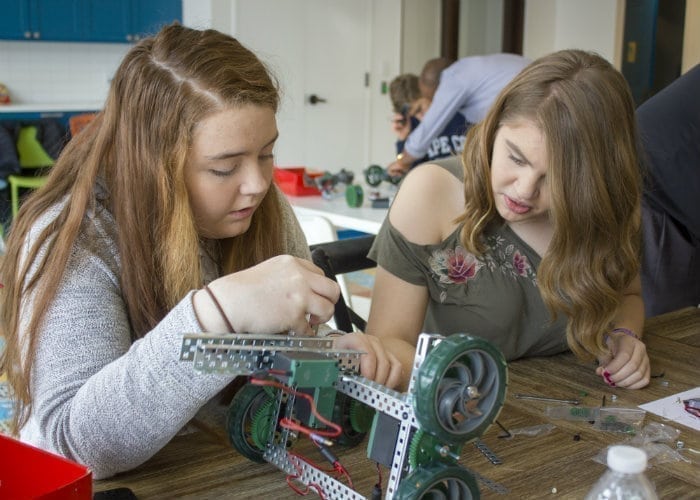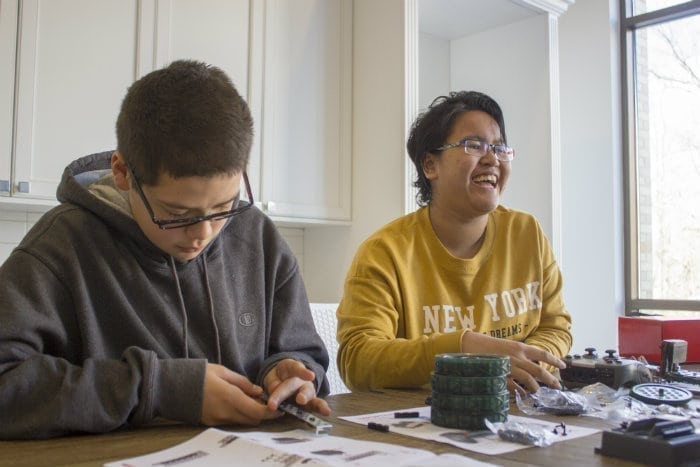Over the past few years, STEM education has undoubtedly grown in popularity. Because of this newfound focus on science, technology, engineering, and math, there have been plenty of creative new ways to get the next generation of innovators interested in pursuing STEM careers.
One example is BeSTEM!, a program that, through a number of camps, teaches students aged 9 to 17 about everything from how robotics can apply to disaster relief to the basics of how engineering can build a bridge. We discuss the importance of spreading STEM education and where the BeSTEM! Program will grow in the future with Co-Founder/Chief Financial Officer Jurgen Tabaku and Co-Founder/Chief Curriculum Officer Omari Sarjeant.
I&T Today: Tell me a little bit about what BeSTEM! does.
Jurgen Tabaku: So we stand as a summer camp. It’s designed around giving the students authentic experiences. What engineering is like and what STEM careers are like. So it’s focused not just on the technical aspects, but also on the interpersonal aspects, on being able to problem solve. We give kids a full project they’re working on through the week, and then they’re going from beginning to end. They’re making a product by the end of the week and then presenting that product.

I&T Today: How did you both get first involved with the program?
Omari Sarjeant: Ah, so we worked for the DoD, Department of Defense, at Walter Reed Army Institute of Research and there we were doing this program for eight years for the DoD. And basically after we were in that for all these years, we decided that we would do it outside of DoD, privately.
I&T Today: STEM education has gotten so much bigger over the years. Why do you believe it’s so important for kids at a young age to get into STEM?
JT: Well I think the biggest thing for kids at a young age is to really explore many different things so that they can really make an honest decision about what it is they want to do, what it is they’re capable of doing, and therefore what opportunities are out there for them as they go forward with their careers.
The big thing with STEM is that it teaches you things that you’re going to see in every workplace. So it teaches you what to do when there aren’t instructions to solve a problem. How do you approach a problem with no direction? How do you figure out what’s being asked of you, who it is going to, what are the criteria, and what are the constraints? And then what do you have to work with? What knowledge do you have to work with; what research do you have to work with? And then how do you pull that together with other people and make something out of that?
I&T Today: BeSTEM! had quite a bit of involvement with this year’s USA Science & Engineering Festival. What did you draw from that experience? Was there anything in particular you were really impressed by?
JT: I was impressed with the variety of stuff there and it just goes to show how ubiquitous STEM has become to everyday life. So just being able to go there and you see it’s filled up two floors of this large convention center with all kinds of different STEM programs.
I&T Today: Something I really noticed too was just the amount of kids that seemed so excited about learning. They’re getting excited about these careers that are going to be growing so much in the next few years. I think that was a really important part of the event.
JT: Absolutely. And the big thing with kids, especially being in D.C., is that you want to make sure that everybody has access to it and everybody can be a part of the learning process, and then eventually get into that career. And that’s why one of the big things that we do is offer a scholarship program so that students who feel they can’t afford to go to a summer STEM program can come for free, or come at a reduced price. We really try to reach out and make sure that everybody has access.

I&T Today: Do you believe you will be involved with the next USASEF show as well?
OS: Yeah, I think, when it happens in 2020, we’ll definitely plan on being there. Again, we think it’s a great place to reach a large amount of kids, especially this last year. We had between 1,500 and 2,000 parents and students at our booth. And I think it’s definitely helpful to expand our brand, as well, in the future. This past year, we had a couple of people who came by asking about partnership opportunities in the future. We’ll be able to have a lot more opportunities for partnership, and that’s the goal.
I&T Today: Where do you see the future of the BeSTEM! program?
JT: I think we see two futures, two pathways, really. The first pathway is expanding the summer program and then also incorporating an after-school program to try and bring more STEM into the traditional school. The other pathway that we see is helping to train educators on how to bring fully immersive STEM programs into the classroom because ultimately, if we can bring it to the kids instead of the kids having to pay to come to us, then we’re really reaching a broader audience, a broader demographic. So I think those are our two pathways moving forward.
To learn more about BeSTEM! Camps, make sure to visit their official website.










